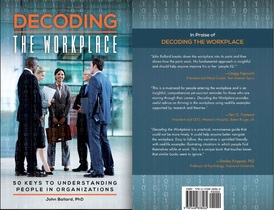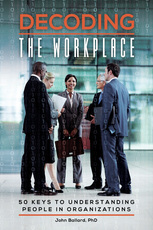
Schneider, Ehrhart, and Macey wrote an excellent review of organizational climate and culture for the 2013 Annual Review of Psychology. The difference in their words:
- Organizational climate - concerned with “the meaning employees attach to the policies, practices, and procedures they experience and the behaviors they observe being rewarded, supported, and expected” (p. 381)
- Organizational culture – concerned with “implicit values, beliefs, and assumptions that employees infer guide behavior, and they base these inferences on the stories, myths, and socialization experiences they have and the behaviors they observe (especially on the part of leaders) that prove to be useful and promote success” (p. 381).
- Knowing the culture: if you know your culture, you can compare it with the culture of other organizations, such as those in the same industry, and benchmark.
- Changing the culture: “Somewhat limited direct influence on effecting change” but can initiate interventions “to reduce gap between existing and desired cultures” (p. 379).
- Leveraging culture for competitive advantage: Make culture an asset through “unique mission statement enacted by support for the unique processes necessary to embed the mission’s values . . .” (p. 380).
My take-aways:
1. Leaders may find it useful to see climate and culture differently. Leaders at every level affect climate profoundly:
- the degree to which employees participate in decision-making
- the level of employee engagement,
- aspects of job satisfaction
- factors affecting workplace stress
2. Organizational feedback surveys are a good way to assess aspects of climate. I used these for many years as a consultant. Gather the information, summarize, and then cascade back through the organization. Where issues are identified, form action teams to work the issues. Do these annually and demonstrate that they have a positive impact and each year the quality of the feedback will improve.
3. In The Optimistic Workplace Shawn Murphy noted that “people in positive work environments outperform those who work in negative work climates by 10 to 30 percent” (p. 9). Most importantly Murphy lays out a roadmap for leaders, even those not in leadership positions, to effect positive workplace climate change through workplace attitudes and behaviors. If you want to change the climate of your workplace, this is a good place to start.
4. In Decoding the Workplace I discuss the impact of culture and how difficult it is to change: “It is the bedrock of the organization and it could take an earthquake to shift the landscape” (p. 93). Culture is pervasive. We are like fish in water unaware of the water. “Culture gives members of an organization a common lens to look through to make sense of events around them” (p. 97). We can often see the surface aspects of culture if we are attentive but the underlying assumptions may be hard to see.
5. For leaders looking for a competitive advantage through culture, I suggest taking a good look at how employees are treated. Do you see employees as costs or as assets? The organization’s underlying assumption about its people is telling. As Wayne Cascio (University of Colorado – Denver) has demonstrated, treating employees as costs can result in layoffs often with “disastrous” consequences, especially in knowledge-based organizations. I highly recommend his book, Responsible Restructuring.
Ballard, J. A. (2015). Decoding the workplace: 50 keys to understanding people in organizations. Santa Barbara, CA: Praeger.
Cascio, W. F. (2002). Responsible restructuring: Creative and profitable alternatives to layoffs. San Francisco: Berrett-Koehler.
Murphy, S. (2015). The optimistic workplace: Creating an environment that energizes everyone. New York: AMACON.
Scheider, B., Ehrhart, M. G., & Macey, W. H. (2013). Organizational climate and culture. Annual review of psychology, 64 (361-388).
Image “Office Work” by Veronica Therese. Used with permission, https://creativecommons.org/licenses/by-sa/3.0/
© John Ballard, PhD, 2016. All rights reserved.
_________________________
Author of Decoding the Workplace, BEST CAREER BOOK Next Generation Indie Book Awards.
"Decoding the Workplace: 50 Keys to Understanding People in Organizations is as informed and informative a read as it is thoughtful and thought-provoking. . . Decoding the Workplace should be considered critically important reading for anyone working in a corporate environment." —Midwest Book Review
Available at leading online bookstores such as Amazon.com
________________________
Follow me on Facebook at https://www.facebook.com/johnballardphd
On Twitter: @johnballardphd


 RSS Feed
RSS Feed